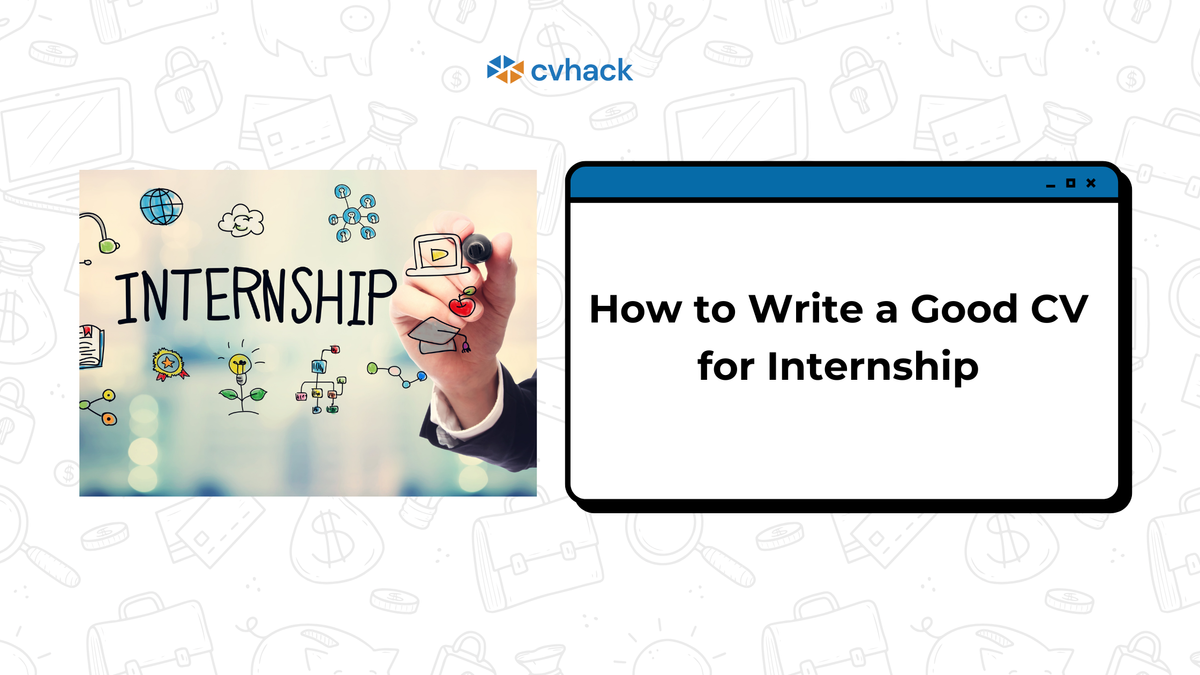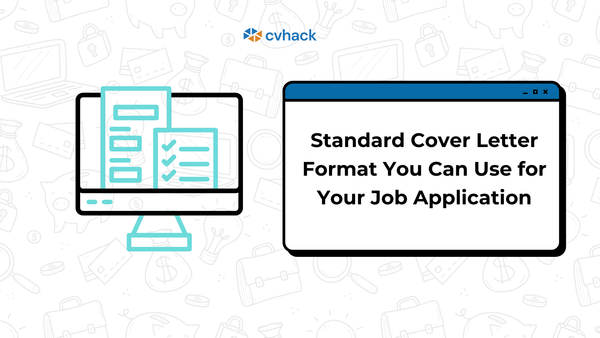How to Write a Good CV for Internship
Writing a winning CV/resume for internship can be a tough task, especially for newbie CV writers.

For students or recent graduates, internships can be a good option to start gathering much-needed experience. However, you do not become an intern on a silver platter, unless you are highly connected. If you don’t have connections in very high places like millions of African youth job seekers, writing a good CV for internship is crucial because it can make you stand out from other potential interns vying for the same role.
Create a new impressive CV in minutes using CVHack
This post intends to assist those grappling with this internship CV writing conundrum.
What is an Internship?
An internship is a temporary work program designed to provide individuals (known as interns), typically students, recent graduates, or those transitioning careers with exposure to a particular industry or professional environment. The main goal of an internship is to help interns gain practical work experience in a specific field. They can also help you build your portfolio and network with professionals.
Internships are particularly beneficial for college and university students, as they offer a bridge between academic learning and professional employment. They serve as a valuable stepping stone for recent graduates looking to break into competitive industries. In some cases, internships lead to full-time job offers if the intern performs well and if the company has suitable openings.
A remote internship is an internship where all tasks, communication, and supervision are conducted online. Remote interns work from home (or any location with internet access) and interact with their teams through digital communication, collaboration, or project management tools.
Remote internships are available in a wide range of fields, including software development, education, financial services, advertising, and more. They offer many of the same benefits as in-person internships, such as gaining practical experience, building your portfolio, and networking with professionals.
How to Write a Good CV for Internship Roles
There is really not much difference between a CV for internship and a CV for full-time work. However, an internship CV is mostly for individuals with little to no formal work experience, such as students or recent graduates. No work experience? No problem; even academic projects from your university days can serve as valuable experience on your CV or resume for internship.
Here is a basic format to use when writing a CV for internship:
Contact Information
This is the topmost (header) section of your CV for internship and must contain accurate personal details so employers can reach you.
What to include:
- Full name
- Job title or field of study (e.g., computer science major)
- Phone number
- Email address
- Location (country, state, city, post code)
- Additional info (optional): (date of birth, nationality, marital status, gender, social media profile(s), etc.)
Tips
- Ensure your contact information is accurate and up-to-date.
- Add your country code to your phone number if you are an international applicant.
Personal Statement
A personal statement (or professional summary/career summary) is a summary of an applicant’s career information. It can be placed in both a resume for internship or a CV for internship (often immediately below the contact information section, though this may vary according to template).
What to include:
- Professional identity: Start with your current professional designation or qualification.
- Core competencies: Highlight your key skills and areas of expertise.
- Notable achievements: Mention significant accomplishments or experiences that demonstrate your capabilities.
- Career objectives: Conclude with a statement about your career aspirations and how they align with the prospective role
Example
As a recent computer science graduate with a solid foundation in software development through university coursework and personal projects, I am eager to apply my skills in a real-world setting. I have experience with languages such as Python, Java, and JavaScript, and have developed web applications and algorithms as part of my academic training. I am seeking a software development internship in a forward-thinking tech company where I can contribute, learn from experienced developers, and grow into a well-rounded professional.
Tip
- Keep it concise (150 to 200 words maximum), confident, and tailored to each specific internship application.
Experience
Here, highlight any roles or responsibilities you've held, even if you don’t have formal job experience.
What to include:
- Job title (e.g., personal project)
- Company or organization name
- Location (country, state, city)
- Start and end dates
Examples of acceptable experience:
- School projects (e.g., undergraduate final year project)
- Projects associated with online certifications (e.g., those from Coursera, edX, and Google)
- Freelance work
- Volunteer roles
- Club leadership positions
- Personal projects
- Experience from job shadowing
- Tech or non-tech contribution to open-source projects or other online communities
- Projects undertaken in competitions (e.g., design contests and hackathons)
Tips
- List your work experience in reverse-chronological order (latest first).
- Use action verbs, and quantify your accomplishments where possible (e.g., “Improved app performance by 15%”).
- Focus on experience relevant to the internship position.
- Use keywords from the job listing when explaining your job responsibilities. This can help you scale through screening software such as applicant tracking systems (ATS) used by recruiters/hiring organizations.
Education
This is where you list your academic background, which is especially important for internship roles.
What to include:
- Institution/organization name
- Degree or program
- Field of study
- Dates attended or expected graduation
- Institution/organization location (country, state, city)
- Start and end dates
- Additional info (optional): (e.g., GPA, relevant coursework, awards/honors, extracurricular activities)
Tip
- If you’ve completed any certifications/licenses, don't add them here. Create a separate section for them.
Certifications
List any certifications you've acquired in this section. They demonstrate additional skills or training.
What to include:
- Certification title/name (e.g., Google UX Design Certificate)
- Issuing authority/organization (e.g., Coursera, Microsoft, Google)
- Date received
- Expiration date (if any)
Tips
- Include industry-recognized certifications that are relevant to the role you're applying for.
- Certifications should be listed according to relevance or recency.
- Write the full certification name instead of abbreviations; add the issuing organization's complete name.
- Ensure the certifications you include have not expired, if they have an expiration date.
- Consider including certification ID numbers, as long as they can be verified online.
Skills
The skills section is meant for the most relevant skills for the internship role.
What to include:
- Hard skills like programming (e.g., Python, JavaScript), software (e.g., Canva), data analysis tools (e.g., SQL), or platforms (e.g., Firebase, GitHub)
- Soft skills such as communication, time management, critical thinking, attention to detail, teamwork, empathy, adaptability, problem-solving, etc.
Tip
- List between 6 to 10 skills.
References
Provide your professional references here. They are people who can vouch for your character, knowledge, skills, and work ethic.
What to include:
- References’ name
- Position, or title
- Name of their company or organization
- Phone number
- Relationship to you (e.g., academic advisor; project supervisor)
Tips
- Always ask for permission before listing someone as a reference.
- Ideally, choose references who have directly supervised your work; can attest to your relevant qualifications; have worked with you recently (within 2-3 years).
- Include at least 2-4 references in your list.
Extras
Apart from the seven sections mentioned above, you can boost your CV further with additional sections
What to include:
- Languages
- portfolio
- publications
- community service
- hobbies/interests
- Any other sections you think will help you
Tip
- Only include extra sections that will add value to your CV and show your knowledge, creativity, versatility, and depth.
Note: Before ending the construction of your CV or resume for internship, finalize by double-checking to ensure that everything is okay for submission to a potential employer. For example:
- Are all your contact details correct?
- Did you sufficiently highlight your most relevant skills and experience?
- Are there any grammar or spelling errors?
- Is the CV ATS-friendly? Is your formatting clean and easy to read?
- Is the CV tailored for the particular internship role?
All these CV-building steps can be quite technical, tedious, and time-consuming, even for an experienced CV writer. You can avoid all the hassles involved in constructing a CV/resume for internship from start to finish by taking advantage of CVHack to write a professional CV, resume, or cover letter within a few minutes. Try CVHack today to maximize your chances of being hired!




